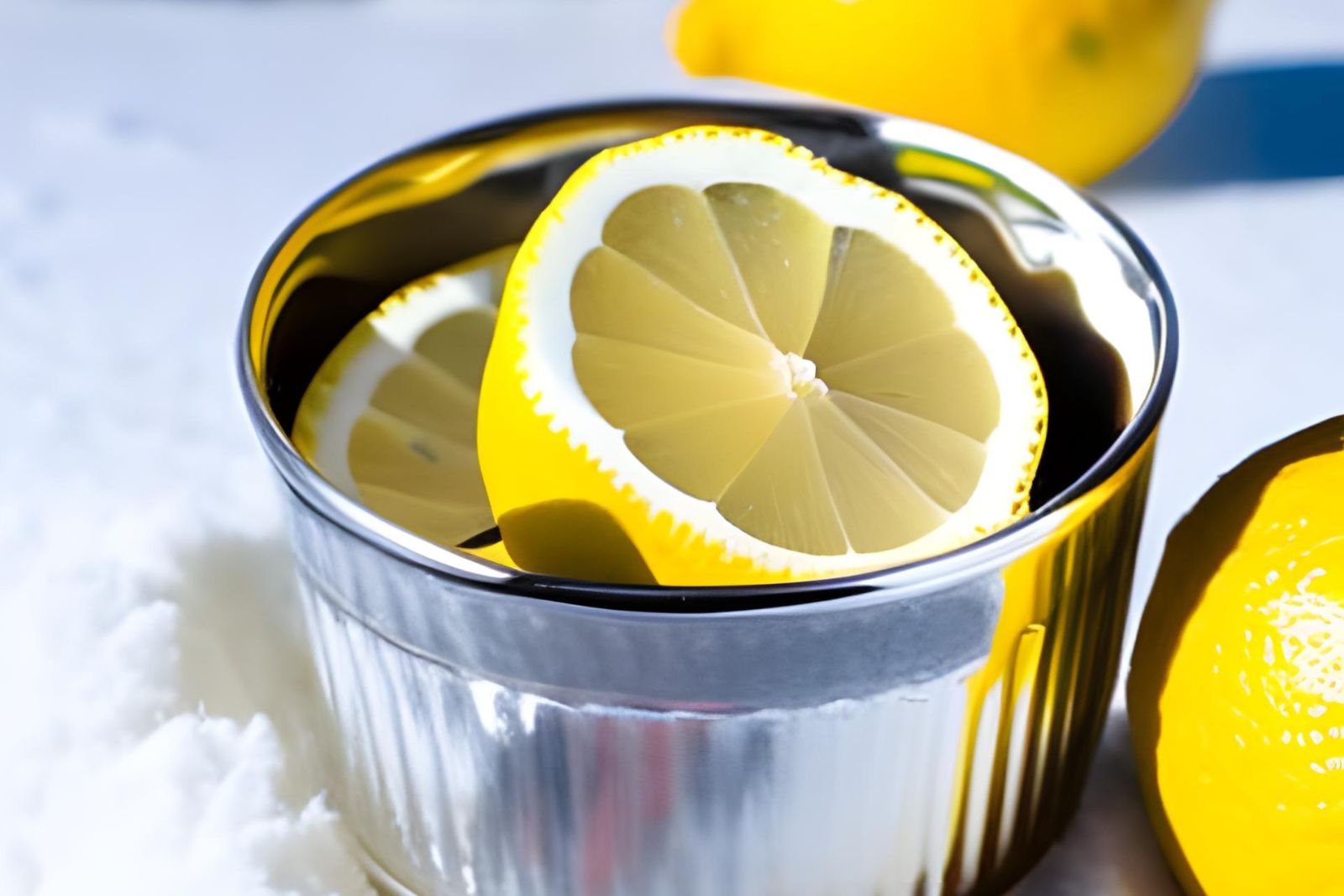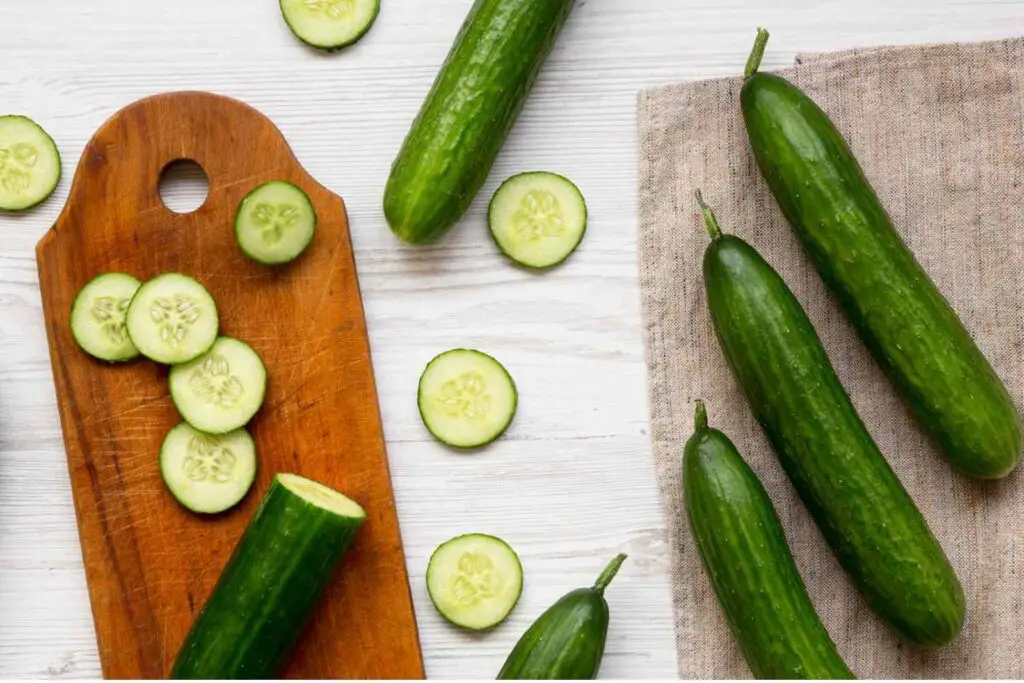
Lemon zest is a delightful addition to a wide range of dishes, from savory to sweet. Its zesty, citrusy flavor can elevate the taste of your favorite recipes, whether it’s a lemony pasta, a tangy dessert, or a refreshing cocktail. If you have an abundance of lemons or simply want to preserve their zest for later use, freezing lemon zest is an excellent option. By following these easy steps, you can keep your lemon zest fresh and ready to enhance your culinary creations whenever you need it. This article offers a comprehensive guide on how to freeze lemon zest for long-term storage without sacrificing its aromatic essence.
Here’s a step-by-step guide on how to freeze lemon zest:
Step 1: Choose ripe lemons
Selecting the right lemons is a crucial first step when it comes to freezing lemon zest. Ripe lemons are not only easier to zest, but they also provide the best flavor and aroma. Here’s why it’s important to choose ripe, vibrant lemons for this process.
Ripe lemons are those that have reached their peak of flavor and juiciness. They have spent enough time on the tree to develop their full citrusy potential. When you use ripe lemons for zesting, you’ll notice that their zest is more fragrant and vibrant compared to underripe ones. This results in a more intense lemon flavor in your dishes or recipes.
One of the key indicators of ripeness in lemons is their color. Look for lemons with a bright yellow hue. A lemon with a deep, rich yellow color is typically a sign of ripeness. Avoid lemons that are overly green or have dull, pale colors, as they are likely not fully ripe and may lack the desired flavor and aroma.
Additionally, gently squeeze the lemons to assess their texture. Ripe lemons should feel slightly firm but still give a little when pressed. If the lemons are rock-hard or overly soft, they may not be at their prime for zesting.
Step 2: Wash the lemons
Washing the lemons thoroughly before zesting is a crucial step in the process of freezing lemon zest. It serves several important purposes and ensures that the zest you extract is clean, safe, and free from contaminants. Here’s why it’s essential to wash the lemons before proceeding:
- Removing dirt and debris: Lemons, like any other fruit, can accumulate dust, dirt, and various contaminants during their journey from the tree to your kitchen. Washing them under cold water helps remove any visible dirt or foreign particles that might be present on the surface of the fruit.
- Pesticide residue: Commercially grown lemons are often treated with pesticides to protect them from pests and diseases. While these pesticides are generally safe when used according to regulations, it’s a good practice to wash the lemons to reduce the potential residue on the skin. Washing can help minimize your exposure to any residual chemicals.
- Food safety: Properly washing lemons is an important step in food safety. By eliminating potential contaminants from the surface, you reduce the risk of introducing harmful bacteria or pathogens into your zest, which could then be transferred to your dishes or recipes.
To wash the lemons effectively, follow these steps:
- Hold each lemon under cold running water, allowing the water to flow over the entire surface.
- Use your fingers or a soft brush to gently scrub the skin, particularly if there are stubborn spots or residues.
- Ensure that you rinse each lemon thoroughly, covering all sides.
After washing the lemons, it’s essential to pat them dry with a clean towel. Drying the lemons removes any excess moisture that may have accumulated during the washing process. Excess moisture can dilute the flavor of the lemon zest and affect the texture of the zest during freezing.
Should I wash the lemons differently if they are organic?
Whether lemons are organic or not, it is essential to wash them thoroughly under cold running water when preparing to zest them. Washing removes potential contaminants, dirt, and residues from the lemon’s surface, ensuring that the zest remains clean and safe for culinary use. Regardless of the lemon’s organic status, proper washing is a standard practice to maintain food safety and quality.
Step 3: Zest the lemons
Zesting the lemons is the heart of the process when it comes to freezing lemon zest. It’s the step where you extract the flavorful, aromatic outer layer of the lemon peel, and it requires some care and attention to ensure you get the best zest possible. Here’s why this step is crucial and how to do it effectively:
- Flavor and aroma: The zest of a lemon contains the highest concentration of its characteristic citrus flavor and aroma. Zest is prized for its ability to add a burst of bright, tangy, and refreshing notes to various dishes and recipes. By carefully zesting the lemons, you capture and preserve these essential qualities.
- Texture and appearance: Zesting the lemons correctly also ensures that you get the right texture and appearance for your zest. The zest should be fine, like small, delicate flakes or shreds, to evenly distribute its flavor throughout your dishes. Proper zesting prevents including the bitter white pith underneath the zest, which can impart an undesirable bitterness to your zest.
Here’s how to zest lemons effectively:
- Use the right tool: You can use either a fine grater or a citrus zester, depending on your preference and the texture you desire for your zest. A fine grater will produce smaller zest particles, while a citrus zester will yield longer, spiral-like strips of zest.
- Hold the lemon firmly: Take one washed and dried lemon and hold it firmly in one hand, with the other hand holding the grater or zester.
- Grate or zest with a light touch: Gently run the grater or zester over the lemon’s surface, rotating the lemon as needed. Be cautious not to press too hard or dig into the white pith beneath the zest, as this can introduce bitterness to your zest.
- Collect the zest: As you zest, you’ll see the vibrant yellow or orange zest accumulating. Use a clean plate, bowl, or paper towel to collect the zest as it comes off the lemon.
- Rotate the lemon: Continue zesting until you have extracted the desired amount of zest from the lemon. If you’re using multiple lemons, repeat the process for each one.
- Discard the lemon when you reach the pith: Be mindful not to zest too deeply into the lemon. Once you start seeing the white pith, stop zesting that particular area, as it can affect the quality of your zest.
Step 4: Portion the lemon zest
Once you’ve successfully zested the lemons, it’s time to consider how you’ll portion and package the zest for freezing. Properly portioning the lemon zest is a practical and convenient approach that allows you to use it effortlessly in your recipes later on. Here’s why it’s important to divide the lemon zest into small portions and how to do it effectively:
- Convenience: Portioning the lemon zest makes it incredibly convenient for future use. It eliminates the need to defrost the entire batch when you only require a small amount for a specific recipe. This way, you can keep the majority of your zest frozen, preserving its freshness, while having readily available portions for your culinary endeavors.
- Recipe accuracy: Depending on your recipes, you may need precise measurements of lemon zest. By portioning it ahead of time, you ensure that you have the right amount readily available when you need it. This is especially helpful for baking and other dishes where ingredient proportions are critical.
Here’s how to effectively portion the lemon zest:
- Consider your usage: Think about how you typically use lemon zest in your recipes. If you often require specific measurements, consider portioning the zest accordingly. For example, you can measure it out in teaspoons or tablespoons.
- Single-use portions: If you frequently use lemon zest in smaller quantities, such as for garnishing dishes or adding a hint of citrus to drinks, consider dividing the zest into single-use portions. Small resealable bags or ice cube trays can be useful for this purpose. Fill each compartment with a portion of zest and freeze it. Once frozen, transfer the portions to a labeled container for easy access.
- Recipe-specific portions: If you have specific recipes in mind that call for precise amounts of zest, measure and portion the zest accordingly. For example, if a recipe requires 2 tablespoons of lemon zest, measure and pack individual portions of 2 tablespoons each.
- Label and date: Regardless of your portioning method, be sure to label each portion with the date it was frozen and any relevant information, such as the quantity of zest in each portion.
Step 5: Pack the zest into airtight containers
Now that you’ve portioned your lemon zest for freezing, the next important step is to pack it into airtight containers or resealable freezer bags. Proper packaging is essential to protect the zest from exposure to air, moisture, and odors, which can lead to freezer burn and a loss of flavor and aroma. Here’s why it’s crucial to pack the zest airtight and how to do it effectively:
- Preventing freezer burn: Freezer burn occurs when moisture within the food item evaporates and forms ice crystals on its surface. These ice crystals can dehydrate and damage the food, resulting in changes in texture, flavor, and aroma. To avoid freezer burn, it’s essential to seal the lemon zest airtight, preventing air and moisture from reaching it.
- Preserving freshness: Airtight packaging helps preserve the freshness and intensity of the lemon zest’s flavor and aroma. It acts as a barrier, ensuring that the zest remains as close to its freshly zested state as possible until you’re ready to use it.
Here’s how to effectively pack the lemon zest into airtight containers or resealable freezer bags:
- Fill the containers or bags: Take the pre-portioned lemon zest and place it into your chosen airtight containers or resealable freezer bags. Leave a small amount of space at the top to accommodate any expansion that may occur as the zest freezes.
- Remove excess air: If you’re using freezer bags, gently press on the bag to push out as much air as possible before sealing it. If you’re using containers, ensure that the lids are tightly sealed to create an airtight environment inside.
- Double protection: For added security against air and moisture, you can consider using vacuum-sealed bags or containers designed for long-term freezing. These options provide an extra layer of protection against freezer burn.
Step 6: Label and date the containers
Labeling and dating the containers or bags holding your frozen lemon zest is a critical practice when it comes to food storage, especially for items like zest that may be kept in the freezer for an extended period. This step serves several essential purposes and ensures the efficiency, safety, and organization of your frozen lemon zest. Here’s why labeling and dating are important and how to do it effectively:
- Tracking freshness: By including the date when you froze the lemon zest on the container, you create a clear record of when it was prepared. This information helps you keep track of the zest’s freshness and ensures you use it within a reasonable timeframe.
- Rotation and organization: When you have multiple containers or bags in the freezer, labeling allows you to easily identify and access the zest you need without having to open each one to check its contents. It simplifies the process of finding and using your lemon zest efficiently.
- Quantity control: Noting the quantity of zest in each container or bag is especially helpful when you’ve portioned it for specific recipes. It ensures that you have the right amount readily available without the need for guesswork or defrosting more than necessary.
Here’s how to effectively label and date your containers or bags:
- Use a waterproof pen or marker: Ensure that the label you write on the container or bag is resistant to moisture, as the freezer environment can be humid. A waterproof pen or marker will prevent smudging or fading of the label.
- Include the date: Write down the date when you froze the lemon zest. Use a format that’s easily readable, such as month/day/year or day/month/year, depending on your preference.
- Note the quantity: If you’ve portioned the zest into specific quantities, write down the amount in each container or bag. For example, if one bag contains 2 tablespoons of zest, make it clear on the label.
- Additional information: If you have specific plans or recipes in mind for the zest in each container, you can also include a brief description or reference, such as “For Lemon Bars” or “Cocktail Garnish.”
Step 7: Freeze the lemon zest
After you’ve carefully packed your lemon zest into airtight containers or resealable freezer bags, the next step is to freeze them. Proper freezing ensures that your zest remains in excellent condition for an extended period, preserving its vibrant citrus flavor and aroma. Here’s why freezing is crucial and how to do it effectively:
- Preservation of freshness: Freezing is a preservation method that slows down the chemical and enzymatic reactions that can cause food to deteriorate over time. By freezing your lemon zest, you lock in its freshness, preventing it from losing its flavor and aroma.
- Protection against freezer burn: Placing your zest in the freezer safeguards it from freezer burn, a condition that can occur when food is exposed to air and moisture. Properly sealed containers or bags minimize the risk of freezer burn by creating a barrier that keeps external elements at bay.
Here’s how to effectively freeze your lemon zest:
- Arrange containers or bags flat: Before placing them in the freezer, make sure that the sealed containers or bags are stored flat. This arrangement allows for efficient use of freezer space and ensures that the zest remains evenly distributed within the container.
- Leave some space for expansion: When sealing your containers or bags, leave a small gap at the top to accommodate any potential expansion that might occur as the lemon zest freezes. This prevents containers from bursting or bags from tearing due to the expansion of the frozen contents.
- Choose an appropriate location in the freezer: Store your lemon zest in a location within the freezer where it won’t be subject to frequent temperature fluctuations, such as near the door. Fluctuations in temperature can affect the quality of frozen foods.
- Avoid overcrowding: While it’s efficient to stack containers, take care not to overcrowd the freezer. Ensure that there’s enough space for proper air circulation, which helps maintain a consistent freezing temperature.
Step 8: Store for future use
Now that your lemon zest is safely frozen, it’s time to consider how to store it for future use. Proper storage ensures that your zest maintains its quality and flavor throughout its time in the freezer. Here’s why storage is crucial and how to do it effectively:
- Long-term preservation: The freezer is an excellent environment for preserving the freshness of foods, and your frozen lemon zest can remain in good condition for up to 6 months or even longer, depending on the quality of your freezing technique and the temperature stability of your freezer.
- Convenience: Proper storage allows you to access your lemon zest whenever you need it for your recipes. Whether it’s a pinch for seasoning a dish or a specific measurement for baking, having frozen lemon zest readily available simplifies your cooking and baking endeavors.
Here’s how to effectively store your frozen lemon zest:
- Maintain consistent freezing conditions: Ensure that your freezer maintains a stable temperature, ideally at or below 0°F (-18°C). Fluctuations in temperature can affect the quality of frozen foods, so it’s essential to have a reliable freezer.
- Organize your freezer: Keep your frozen lemon zest in a designated section of your freezer, separate from other frozen items. This dedicated space ensures that you can easily locate and access the zest without rummaging through the freezer.
- Use an airtight container or bag: If you’re storing multiple portions of zest, consider organizing them within a larger airtight container. This prevents individual portions from getting lost or misplaced.
- Label and date for tracking: Continue to label and date any additional containers or bags you may use for storing portions of zest. This helps you track the freshness and use-by dates of each portion.
Now, here’s the best part:
You can use frozen lemon zest directly from the freezer without the need for thawing. The zest retains its flavor and aroma even when frozen, and it can be grated or sprinkled directly onto your dishes or recipes. Whether it’s adding a burst of citrus to a sauce, seasoning a salad, or zesting for a baking project, the frozen zest is incredibly convenient to use. Just grab the desired portion, use it as needed, and return the rest to the freezer for future culinary adventures.
Other related questions
Can I refreeze lemon zest?
No, it’s not recommended to refreeze lemon zest once it has been thawed. Repeated freezing and thawing can degrade the quality and flavor of the zest. It’s best to use the portion you need and keep the rest frozen until you’re ready to use it again.
How do I know if the lemon zest has gone bad after being frozen?
Frozen lemon zest can go bad if it’s exposed to improper storage conditions or extended freezer storage. Signs of spoilage include a loss of aroma, flavor, and vibrant color. The zest may also develop freezer burn or off-odors, indicating it has deteriorated and should be discarded.
Can I freeze lemon juice along with the zest?
It’s possible to freeze lemon juice separately from the zest, but they have different properties. Lemon juice can be frozen in ice cube trays and used for various recipes, while zest is best frozen as described in the article for optimal flavor.
What are some creative uses for frozen lemon zest?
Frozen lemon zest can be used in a wide range of dishes, from baked goods to savory recipes. It’s excellent for flavoring marinades, salad dressings, and even sprinkling on vegetables or seafood for added zing.
Can I use frozen lemon zest in place of fresh zest in recipes?
Yes, you can use frozen lemon zest as a substitute for fresh zest in most recipes. However, keep in mind that the texture may be slightly different, so consider this when using it in applications where texture matters, such as garnishes.
Is there a difference in taste between fresh and frozen lemon zest?
Frozen lemon zest retains much of its vibrant flavor and aroma, but there may be a subtle difference compared to freshly zested lemon. However, the convenience of having frozen zest readily available often outweighs this slight variation.
Can I freeze lemon zest from different types of lemons?
Yes, lemon zest from different types of lemons, such as Eureka, Meyer, or Lisbon lemons, can be frozen using the same method outlined in the article. The freezing process preserves the unique flavor and aroma of each lemon variety, allowing you to enjoy their distinct citrusy profiles in various culinary applications. Ensure that you select ripe lemons of the desired type for the best zest quality.
Is there a difference between freezing lemon zest and lemon peel?
Yes, there is a difference between freezing lemon zest and lemon peel. Lemon zest specifically refers to the outer, colored part of the lemon peel, which is rich in flavor and aroma. When freezing lemon zest, you focus on preserving this aromatic outer layer while avoiding the bitter white pith beneath it. Freezing the entire lemon peel, including the pith, may result in a different texture and flavor profile and is not commonly done for culinary purposes.
Can I freeze lemon zest with sugar or salt for preservation?
It is not recommended to freeze lemon zest with sugar or salt for preservation. Freezing lemon zest separately, without additives, is the preferred method for maintaining its natural flavor and aroma. You can combine zest with sugar or salt in recipes as needed, allowing you to control the amount and balance of these ingredients for the specific dish you are preparing.
Can I freeze lemon zest in olive oil or butter for convenience?
It is not advisable to freeze lemon zest in olive oil or butter for convenience. Freezing zest in fats can affect the texture and quality of both the zest and the fats. It’s better to freeze the zest separately and add it to your recipes as needed, incorporating it into olive oil or butter when preparing a particular dish to maintain the desired flavor and texture.
Can I store frozen lemon zest in the refrigerator instead of the freezer?
Storing frozen lemon zest in the refrigerator is not recommended as an alternative to freezing. While refrigeration can extend the life of lemon zest compared to leaving it at room temperature, it is not suitable for long-term preservation. Freezing remains the optimal method for maintaining zest quality for an extended period, allowing you to enjoy its vibrant citrus flavor and aroma whenever needed.








